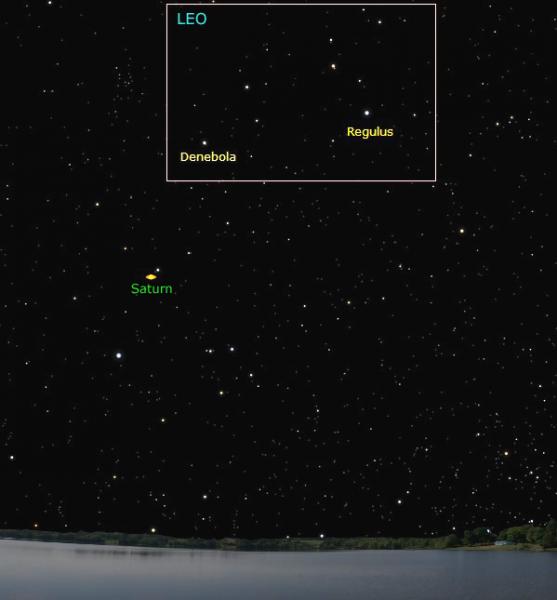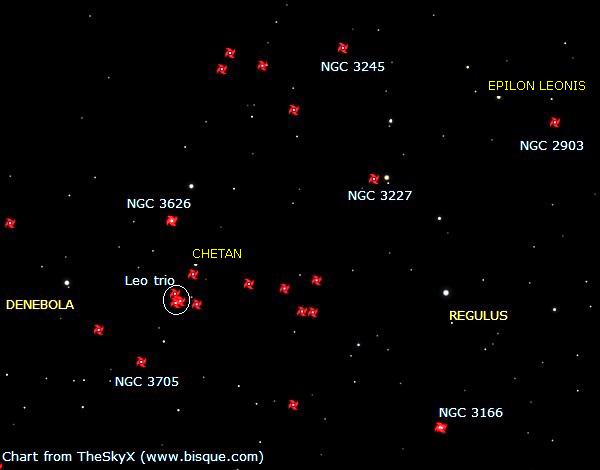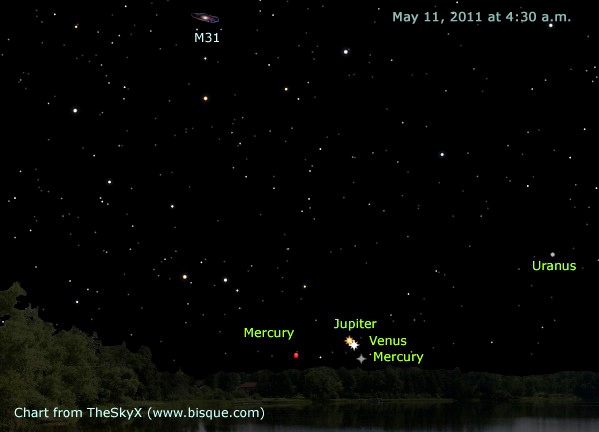A Smorgasbord Of Galaxies
The sky above offers many types of objects to hunt and enjoy. We scan the night either visually, using star charts and then star hop with telescopes. Keen eyesight is a must for a successful hit. One can always click on a control pad of a computerized telescope that magically moves to the object’s programmed coordinates. No matter what mode you choose to seek out these sometimes hard to find objects, your labours will not be in vain. The celestial menu includes diffuse, emission or planetary nebulae, star clusters or even colourful double and multiple star systems. However, these objects, for the most part, belong to our Milky Way Galaxy and pretty well in the ‘stellar neighbourhood’.
Remote galaxies, on the other hand, are the most frequent objects one comes across during observing sessions. Many of these starry islands are tiny and faint. At times, numerous attempts to find them, end in frustration and the phrase “patience is a virtue” is well tested. There are however many instances that your first try will greet you with success. With distances of tens to hundreds of millions of light-years, it is a wonder we can glimpse these smudges at all.

We are now at that time of year when these faint smudges of light are plentiful. One of the most concentrated areas of galaxies is an immense section running from Ursa Major (Big Dipper) in the north continuing down through Canes Venatici, Coma Berenices and ending at Virgo. Literally, hundreds of galaxies lie within this swarm with each consisting of 100, 200, 300 billion stars. With so many galaxies confined to a somewhat small area, an observer can easily scoop up more than one in a wide-angle eyepiece.
This month we will look at a few objects belonging to Leo the Lion. The proud cat of the night is now at its higher elevation. When the sky darkens after sunset, face south and look up. Locate a backward question mark or sickle which outlines the lion’s head. The bright star at the bottom of the sickle is Regulus. In mythology, Regulus symbolizes the feline’s heart and shines at magnitude 1.3. It lies an estimated 77 light-years from us. Regulus is about 3.5 times the size of the Sun but is 140 times brighter visually and 240 times brighter with the star's ultraviolet radiation. Here comes an observing challenge. Try to spot Leo 1, a dwarf magnitude 11.2 galaxy. What makes this a real challenge is this splash of light is a mere 12 arc minutes from brilliant Regulus. The secret of trying to spot the galaxy is to move Regulus out of the field of view.
Now from the sickle, pan your eyes to the east until you pick up a 30-degree triangle. This shape represents the beast’s hindquarters and tail, ending with the easternmost star named Denebola. At 36 light-years from the Sun, Denebola might not be a lonely star floating in space. Astronomers believe it is surrounded by infrared-emitting dust which might be a sign of a planetary system in its development stage. There is still no conclusive evidence of this. Denebola is also a very subtle variable that changes in brightness by small amounts over periods of mere hours.
From Denebola, move back west until you come across Chertan. This sun sits at the 90 angle corner of the triangle. Chertan lies 178 light-years from us and measures four and a half times the radius of our Sun. It is believed that Chertan rotates once every 9 days compared to the Sun’s 25-day spin. Chertan is also a great point to begin star hopping to a magnificent group of galaxies.
Moving two and a third degrees south and a little east, you should pick up a group of three galaxies. This is called the Leo Trio and is made up of M65, M66 and NGC 3628. This is a very popular target for observers and astrophotographers. A low eyepiece should fit the trio nicely in the field of view. The three takes up about the same area as the full moon. M65 is 35 million light-years from us. Estimated to be 70,000 light-years in diameter, it is smaller than our galaxy’s 100,000 light-year span. Telescopically, it registers at magnitude 9.3 with dimensions measuring 8.0 by 1.5 arc minutes. Keep in mind the full moon is 30 arc minutes wide.

Of the three, M66 possesses the most detail in its mighty arms. It too resides 35 million light-years away. Dimension wise, M66 measures about the same as M65 and is a half a magnitude brighter. The last of the group is NGC 3628. Tilted perfectly toward us, NGC 3628 looks like a bloated object as opposed to the classic pencil thin appearance of an edge-on galaxy. It is 25 million light-years away and 10% wider than our Milky Way. At magnitude 9.6, NGC 3628 is also the faintest of the group.
From the trio, keep moving south a bit more than four degrees to find NGC 3705. At magnitude 11.0 and only measures 4.0 arc minutes in length, it might give you a bit of trouble spotting its very dusty arms with knots visible on the very outer edge. NGC 3705 has an estimated distance of 18 million light-years.
Moving over to the sickle, look for Epsilon Leonis – the very tip of the blade. This 3rd magnitude star is 250 light-years from us and is a yellow G1 star – very close to our Sun’s G2 spectral status. There is a major difference between the two. This giant star has a luminosity of 360 times that of our Sun which means this star measures around 23 times the radius of our Sun.
From Epsilon Leonis, slide over a little less than 4 degrees to NGC 2903. Even at 30 million light-years, this galaxy’s magnitude is listed at 8.8. Its length is 110,000 light-years and sports a lot of delicate detail in its spiral arms. With dimensions of 12 by 6 arc minutes, you will enjoy the view.

Pretty well all the planets of our solar system except for Saturn which is out at sunset and remains visible until dawn, are huddled together in the morning sky low in the east. It is a wide cluster of planets for the first week of May. The highlight will occur on May 11 when Venus will be about a half degree below Jupiter – make a striking view. Below the pair and in the same line of sight will be Mercury. Keep watching how these worlds jockey for position from morning to morning.
The new moon occurs on May 3 (lunation 1093) with the full Flower Moon occurring on May 17 at 11:09 Universal Time. The planet Mercury will be highest in the morning sky and climbs to its maximum 27 degrees. On May 10, the X feature will be visible near crater Werner at 1 a.m. EDT with the illusion lasting the rest of the night. It definitely will make a great photo opt.
Until next month, clear skies everyone.

